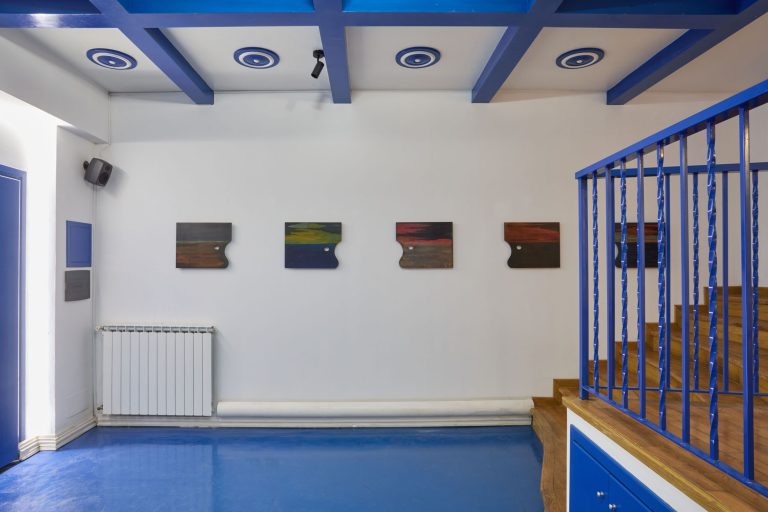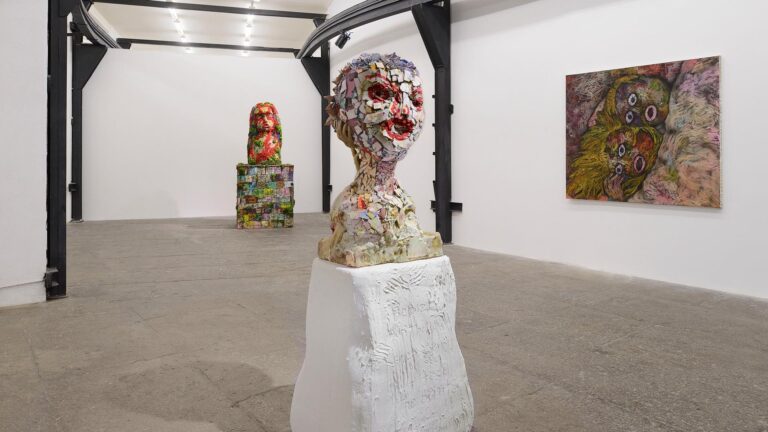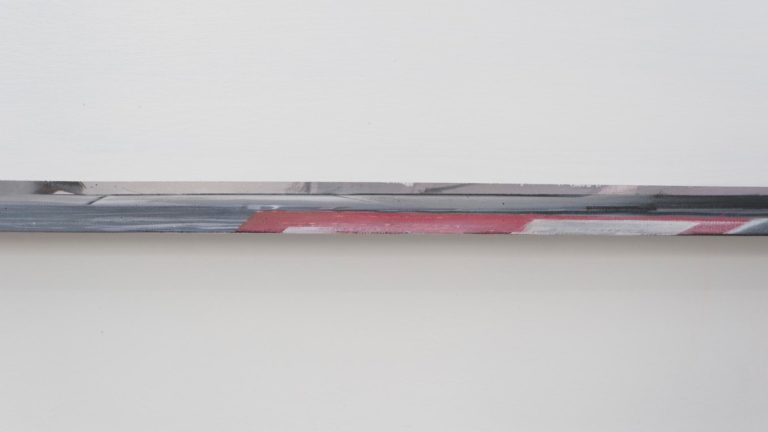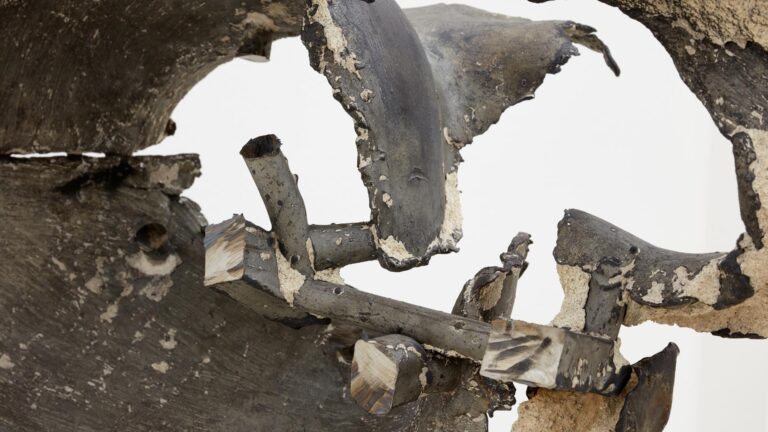Artist: Gianni Caravaggio
Exhibition title: Uncertain substance
Venue: SpazioA, Pistoia, Italy
Date: October 31, 2015 – January 23, 2016
Photography: images copyright and courtesy of the artist and SpazioA, Pistoia
Whenever we contemplate a statue of Classical art and the beauty of the work, our sense of awe is also accompanied by a sense of remoteness and inaccessibility. The perfection of form has no longer been the essence of sculpture for centuries now. The stone worked by Classical sculptors has meaning only because it has a well-defined and carefully proportioned form, only because it was brought into existence by the artist’s hand. We may easily understand how stone itself was perceived in Classical thought: as something formless, nothing but a fragment of material, neither sensitive nor rational, and only as chaos, pure indeterminacy. The sculptor’s art grants raw material form, and only thanks to the sculptor’s gesture does the stone become what it is. The sculptor liberates a form in order for it to emerge from the ineffable and unknowable sphere of chaos into visibility in the cosmos. The cosmos is the orderly and beauteous aggregate of all the bodies that have taken form and become present, and for this reason inhabit through soma. With its appearance, a statue shows us what happens on Earth to every being that cannot bloom by its own effort alone: the sculptor is the one who reveals what it means to come into existence, to take one’s place in the cosmos. From this point of view, the essence of Classical art is summed up in the thought of Anaximander: we must think of apeiron, of the ”indefinite”, as the obscure origin of all the things from which all forms take life by advancing from their indefinite nature and denying it, in the same way that a statue can come to life only by freeing itself from material’s chaotic gravity. Life is a matter of forms, the incarnation of visible and tangible qualities that open up to the senses and the soul. Art is this taking place in life through form that is proportioned and beauteous, and through this transfiguration of the cyclical movement of life between emergence from the indefinite and return to the indefinite.
Now a sculpture appears before my eyes: a nighttime sky envelops a block of black marble. A block of marble sheathed in a photograph: this photographic “skin” has been cut, and the dark marble beneath can be seen through the slits. I behold Gianni Caravaggio’s Uncertain substance before me. The sense of measure, harmony, the orderly wholeness of what is, are lost experiences. Greek statuary, as a simple vision of substance, has given way, in fact, to uncertain substance. Greek statuary and Uncertain substance open out to two different worlds of vision and two universes of substance. On one hand, measure and cosmos, on the other hand, the incommensurable and the infinite. The incommensurable and indefinite are our substance. The work of Gianni Caravaggio stages our relationship with things, our relationship with images: Uncertain substance. We see Uncertain substance. We ourselves are Uncertain substance. The sculptor, as in the days of antiquity, continues to donate vision, but what he brings to our eyes is no longer the luminous measure of what is, but rather the indeterminacy of our substance. With no nostalgia for the past, Gianni Caravaggio directs our gaze deep into this indeterminacy that makes up our material, our actions, our being, and it is from this indeterminacy – which remained invisible to and unrecognizable by Classical sculpture and thought – that Uncertain substance is born.
All is apeiron, everything is indefinite in Uncertain substance. Not form as redeeming emergence from the indeterminate but rather the transcendence of form, the ostentation of its plurality and indeterminacy is the image of the indefinite, of our substance. This leads me to believe that the work’s focal point lies in its rips and slits, the places in which the difference between outside and inside, container and content is annulled, where form is revealed precisely and only as indeterminate, infinite. The cut that is both borderline and point of collision is in itself a place of uncertainty, the possibility of the surface and its negation in the same moment. Uncertain substance drives our gaze into the boundless, appealing to us by saying: this thou art.
Uncertain substance is an ethic of the infinite through image. Beauty in unbounded substance is therefore possible. Beauty is a cut. Perhaps every great work of art today can only aspire to be this. The universe that opens up to our eyes is only one of the infinite number of cuts possible, but each one of these is in itself infinite. Uncertain substance makes us open our eyes wide to marvel, such as when we observe measureless phenomena like rainbows, the changing colors on the imperceptible surface of a soap bubble, the shimmering plumage of certain birds. Where does the sky begin and the wavy outlines of a mirage end? The limit and shape are non-decidable, but the sense of the event is clearly before my eyes. We pause at this etymologically immense limit. The sculptor can unveil the beauty of what has no measure, can show us our substance in images. One philosopher taught that nowhere is the world more colorful than in the slenderest of films. This allows us to imagine how its richness lies in what has neither form nor measure. Uncertain substance is capable of giving life to the images in which the boundary between surface and depth, between one second and eternity is eclipsed.
– Maurizio Guerri
Gianni Caravaggio, Sostanza incerta, 2015
Gianni Caravaggio, Sostanza incerta, 2015
Gianni Caravaggio, Sostanza incerta, 2015 (detail)
Gianni Caravaggio, Sostanza incerta, 2015 (detail)
Gianni Caravaggio, In un’altra dimensione, 2008
Gianni Caravaggio, Giovane universo, 2014















